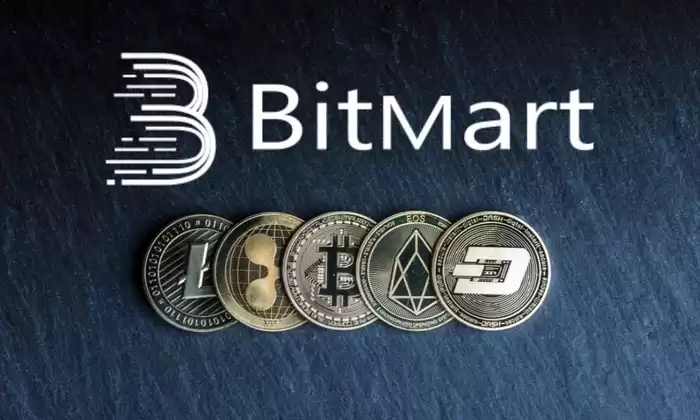-
 Bitcoin
Bitcoin $117600
0.25% -
 Ethereum
Ethereum $4424
0.10% -
 XRP
XRP $3.101
0.50% -
 Tether USDt
Tether USDt $1.001
-0.01% -
 BNB
BNB $836.2
1.26% -
 Solana
Solana $188.8
2.11% -
 USDC
USDC $1.000
0.01% -
 Dogecoin
Dogecoin $0.2301
0.57% -
 TRON
TRON $0.3485
-1.00% -
 Cardano
Cardano $0.9209
-1.34% -
 Hyperliquid
Hyperliquid $46.72
-1.19% -
 Chainlink
Chainlink $22.62
4.84% -
 Stellar
Stellar $0.4275
-0.38% -
 Sui
Sui $3.761
1.91% -
 Bitcoin Cash
Bitcoin Cash $586.7
-0.25% -
 Ethena USDe
Ethena USDe $1.001
0.01% -
 Hedera
Hedera $0.2510
2.06% -
 Avalanche
Avalanche $24.21
2.22% -
 Litecoin
Litecoin $119.7
1.07% -
 Toncoin
Toncoin $3.450
1.06% -
 UNUS SED LEO
UNUS SED LEO $9.411
-0.93% -
 Shiba Inu
Shiba Inu $0.00001298
1.20% -
 Uniswap
Uniswap $10.98
3.25% -
 Polkadot
Polkadot $3.961
2.16% -
 Dai
Dai $1.000
0.00% -
 Bitget Token
Bitget Token $4.642
0.95% -
 Cronos
Cronos $0.1514
0.57% -
 Ethena
Ethena $0.7290
3.78% -
 Monero
Monero $254.1
7.69% -
 Pepe
Pepe $0.00001102
2.47%
Will the BitMart perpetual contract liquidate?
Perpetual contracts pose liquidation risks due to adverse price fluctuations, insufficient margin, market gapping, and stop-loss hunting.
Dec 02, 2024 at 06:44 am

Will the BitMart Perpetual Contract Liquidate?
Perpetual contracts, also known as perpetual futures or perpetual swaps, are a type of derivative contract that allows traders to speculate on the future price of an underlying asset without having to take delivery of the asset itself. Unlike traditional futures contracts, which have a fixed expiration date, perpetual contracts do not expire and can be held indefinitely. This makes them ideal for traders who want to speculate on the long-term price of an asset without having to worry about the contract expiring.
However, perpetual contracts come with their own set of risks, one of the most significant of which is the risk of liquidation. Liquidation occurs when the trader's margin balance falls below a certain level, known as the maintenance margin. When this happens, the trader's position is closed and they may lose all of their invested capital.
There are a number of factors that can lead to a perpetual contract liquidation, including:
- Adverse price movements: If the price of the underlying asset moves against the trader's position, the trader's margin balance will decrease. If the margin balance falls below the maintenance margin, the trader's position will be liquidated.
- Insufficient margin: Traders who do not have enough margin to cover their positions are at risk of liquidation. The amount of margin required will vary depending on the size of the position and the volatility of the underlying asset.
- Market gapping: Market gapping occurs when the price of an asset moves sharply in one direction without trading at any prices in between. This can happen during periods of high volatility, such as during a market crash. If a market gap occurs, it can cause the trader's margin balance to fall below the maintenance margin and lead to liquidation.
- Stop-loss hunting: Stop-loss hunting is a tactic used by some traders to trigger the stop-loss orders of other traders. This can happen when a trader places a large order that is designed to move the price of the asset in a certain direction. If the price moves in the desired direction, it can trigger the stop-loss orders of other traders, which can lead to a cascade of liquidations.
Traders can take a number of steps to reduce the risk of liquidation, including:
- Use a realistic margin level: The margin level is the percentage of the position size that is covered by the trader's margin balance. A higher margin level will reduce the risk of liquidation, but it will also reduce the potential profits.
- Place stop-loss orders: Stop-loss orders are designed to close a position if the price of the underlying asset moves against the trader's position by a certain amount. This can help to limit the trader's losses in the event of an adverse price movement.
- Monitor the market closely: Traders should monitor the market closely for any signs of increased volatility or market gapping. This will help them to take appropriate action to reduce the risk of liquidation.
By following these steps, traders can reduce the risk of liquidation and protect their capital. However, it is important to remember that perpetual contracts are a risky investment and there is always the potential for loss.
Disclaimer:info@kdj.com
The information provided is not trading advice. kdj.com does not assume any responsibility for any investments made based on the information provided in this article. Cryptocurrencies are highly volatile and it is highly recommended that you invest with caution after thorough research!
If you believe that the content used on this website infringes your copyright, please contact us immediately (info@kdj.com) and we will delete it promptly.
- Kazakhstan's Crypto Leap: Bitcoin ETF and Central Asia's Digital Finance Future
- 2025-08-13 12:45:19
- BlockDAG Presale Blazes Past $371M: Fundraising Frenzy Fuels Crypto Sensation
- 2025-08-13 13:05:21
- Meme Coins: Chasing the 2025 Surge – Which Will Moonshot?
- 2025-08-13 10:25:23
- Bitcoin's Wild Ride: Rally, Pullback, and What's Next
- 2025-08-13 10:25:23
- Bitcoin, Bitmax, and Institutional Demand: A New Era of Crypto Investment
- 2025-08-13 10:45:12
- Solana, ROAM, and Airdrops: What's the Buzz in 2025?
- 2025-08-13 11:35:13
Related knowledge

Is it possible to adjust the leverage on an open position on KuCoin?
Aug 09,2025 at 08:21pm
Understanding Leverage in KuCoin Futures TradingLeverage in KuCoin Futures allows traders to amplify their exposure to price movements by borrowing fu...

What cryptocurrencies are supported as collateral on KuCoin Futures?
Aug 11,2025 at 04:21am
Overview of KuCoin Futures and Collateral MechanismKuCoin Futures is a derivatives trading platform that allows users to trade perpetual and delivery ...

What is the difference between realized and unrealized PNL on KuCoin?
Aug 09,2025 at 01:49am
Understanding Realized and Unrealized PNL on KuCoinWhen trading on KuCoin, especially in futures and perpetual contracts, understanding the distinctio...

What different order types are available to use on KuCoin Futures?
Aug 13,2025 at 11:35am
Understanding Order Types on KuCoin FuturesKuCoin Futures offers a comprehensive range of order types to accommodate different trading strategies and ...

How does KuCoin Futures compare against Binance Futures in terms of features?
Aug 09,2025 at 03:22am
Trading Interface and User ExperienceThe trading interface is a critical component when comparing KuCoin Futures and Binance Futures, as it directly i...

How can I manage risk when applying high leverage on KuCoin?
Aug 13,2025 at 11:35am
Understanding High Leverage and Its Implications on KuCoinHigh leverage in cryptocurrency trading allows users to control larger positions with a rela...

Is it possible to adjust the leverage on an open position on KuCoin?
Aug 09,2025 at 08:21pm
Understanding Leverage in KuCoin Futures TradingLeverage in KuCoin Futures allows traders to amplify their exposure to price movements by borrowing fu...

What cryptocurrencies are supported as collateral on KuCoin Futures?
Aug 11,2025 at 04:21am
Overview of KuCoin Futures and Collateral MechanismKuCoin Futures is a derivatives trading platform that allows users to trade perpetual and delivery ...

What is the difference between realized and unrealized PNL on KuCoin?
Aug 09,2025 at 01:49am
Understanding Realized and Unrealized PNL on KuCoinWhen trading on KuCoin, especially in futures and perpetual contracts, understanding the distinctio...

What different order types are available to use on KuCoin Futures?
Aug 13,2025 at 11:35am
Understanding Order Types on KuCoin FuturesKuCoin Futures offers a comprehensive range of order types to accommodate different trading strategies and ...

How does KuCoin Futures compare against Binance Futures in terms of features?
Aug 09,2025 at 03:22am
Trading Interface and User ExperienceThe trading interface is a critical component when comparing KuCoin Futures and Binance Futures, as it directly i...

How can I manage risk when applying high leverage on KuCoin?
Aug 13,2025 at 11:35am
Understanding High Leverage and Its Implications on KuCoinHigh leverage in cryptocurrency trading allows users to control larger positions with a rela...
See all articles

























































































